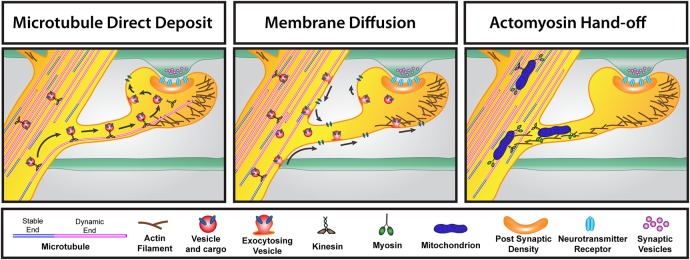FIGURE 4:
Three different routes for transporting material into dendritic spines. Left, the microtubule direct deposit model. During the time that a microtubule has polymerized into a dendritic spine, kinesin-based transport of vesicles containing cargo enter the spine along the microtubule. Release of the motor from the microtubule leads to exocytosis of the vesicle and cargo in the spine head. Middle, the membrane diffusion model. Kinesin-based transport results in movement of vesicles and cargo in the dendrite. Vesicles exocytose in the dendrite shaft and spine and diffuse in the plane of the membrane throughout the dendritic spine. Right, the actomyosin-based hand-off model of transport into spines. In this example, mitochondria are transported throughout the dendrite via kinesin-based transport but also have myosin motors attached. A hand-off occurs between kinesin–microtubule transport to actin-myosin–based transport, resulting in transport of mitochondria into the dendritic spine. Endoplasmic reticulum is transported into spines via this mechanism as well.

